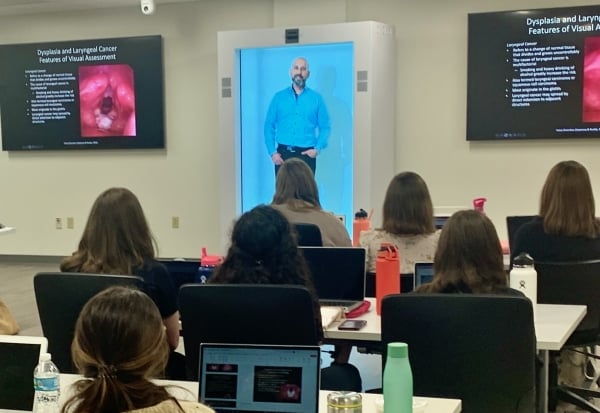Holograms Begin Beaming Into College Classrooms
In a world filled with constantly evolving technology, holograms have now found their way into college classrooms. Imagine being able to attend a lecture or seminar without physically being present in the room. This futuristic technology is now becoming a reality as holograms are being used to project virtual representations of professors and guest speakers into classrooms around the world.
While this may sound like something out of a science fiction movie, the use of holograms in education is becoming more common. This innovative approach allows students to interact with teachers and experts from remote locations, providing a more engaging and immersive learning experience.
One example of this technology in action is the use of holographic lecturers at Imperial College London. This prestigious university has been using holograms to bring in guest speakers who are unable to travel to the campus. By projecting a life-size image of the speaker onto a stage, students are able to feel as though the speaker is right in front of them, despite being thousands of miles away.
The benefits of using holograms in education are vast. Not only does it allow for greater access to experts and resources from around the world, but it also provides a more dynamic and interactive learning experience for students. By incorporating holograms into the classroom, lectures and presentations become more engaging and memorable, ultimately leading to a deeper understanding of the material.
Additionally, holograms can help bridge the gap between traditional and online learning. As more colleges and universities offer online courses, the use of holograms can help to create a sense of community and connection for remote students. By bringing in holographic guest speakers or professors, online learners can engage in real-time discussions and Q&A sessions, providing a more personalized and enriching learning experience.
While the use of holograms in education is still in its early stages, the potential for this technology to revolutionize the way we learn is immense. As colleges and universities continue to explore new ways to enhance the learning experience for students, holograms are sure to play a key role in shaping the future of education.
In conclusion, holograms are now beaming into college classrooms, bringing with them a new era of interactive and immersive learning experiences. With the ability to project virtual representations of teachers and experts from around the world, holograms are revolutionizing the way we learn and engage with educational content. As this technology continues to evolve, it is exciting to think about the endless possibilities that holograms hold for the future of education.



